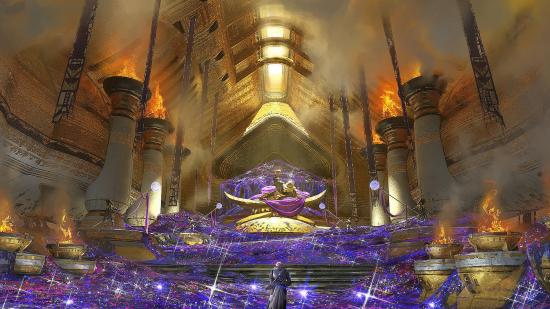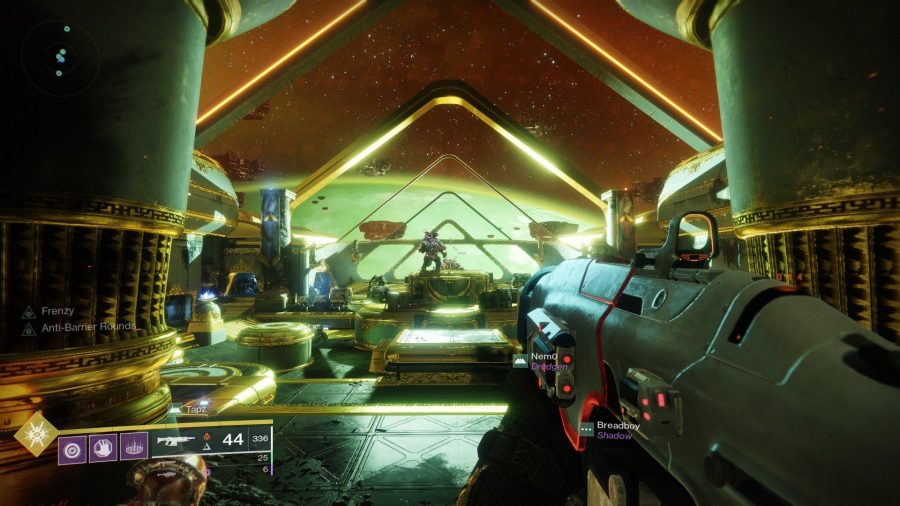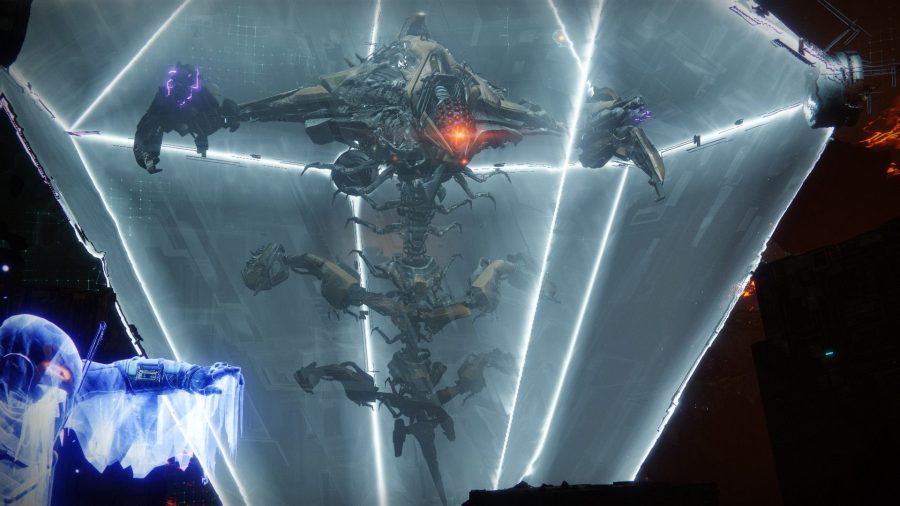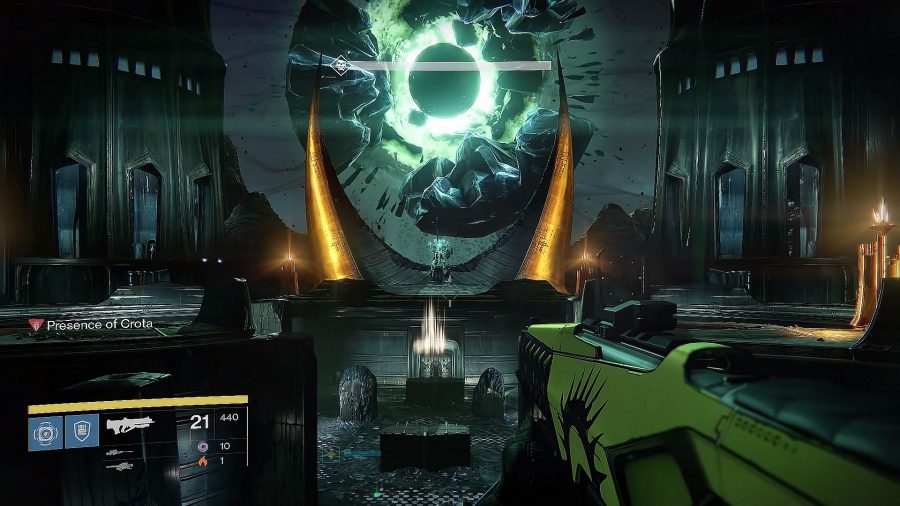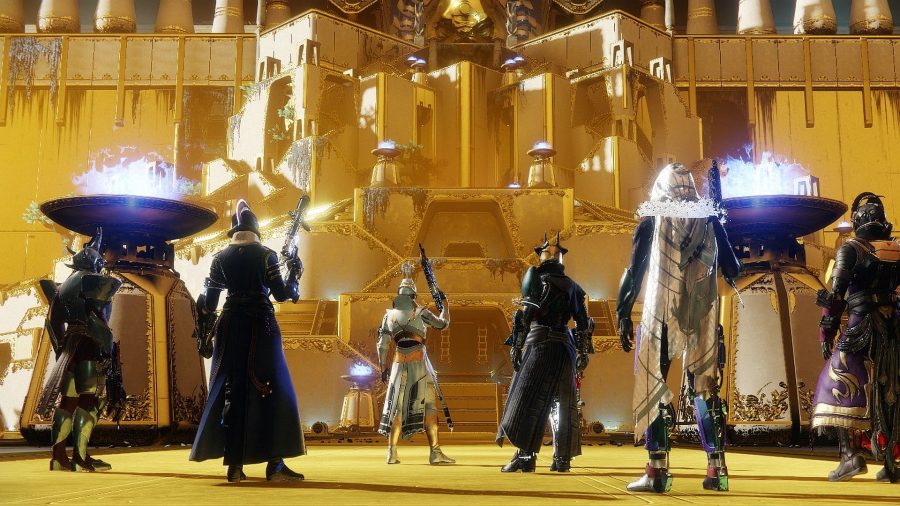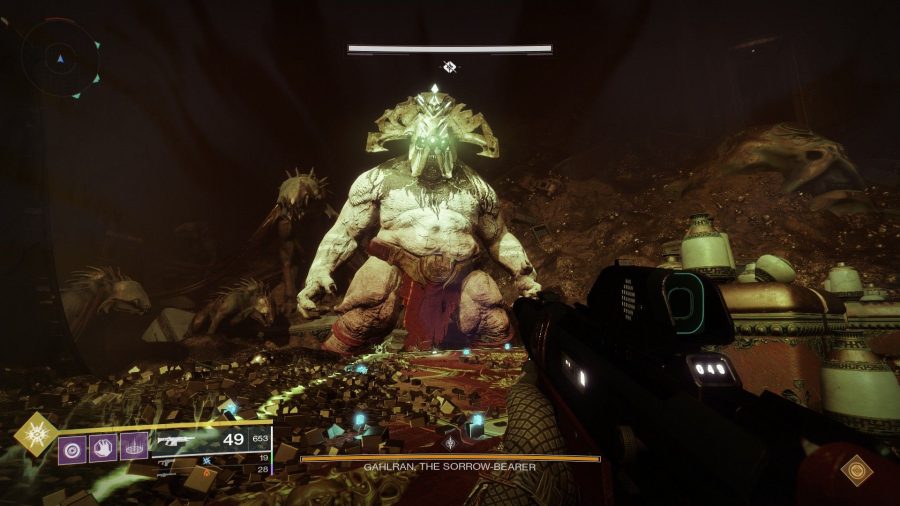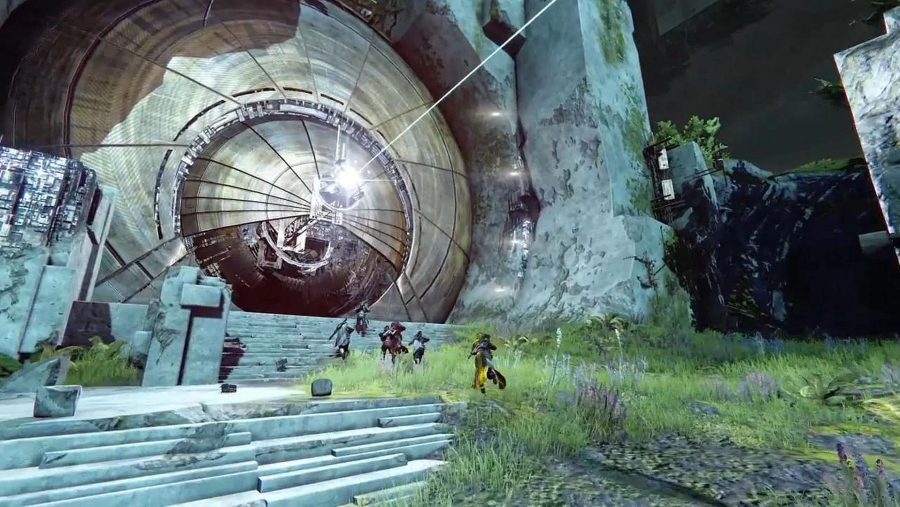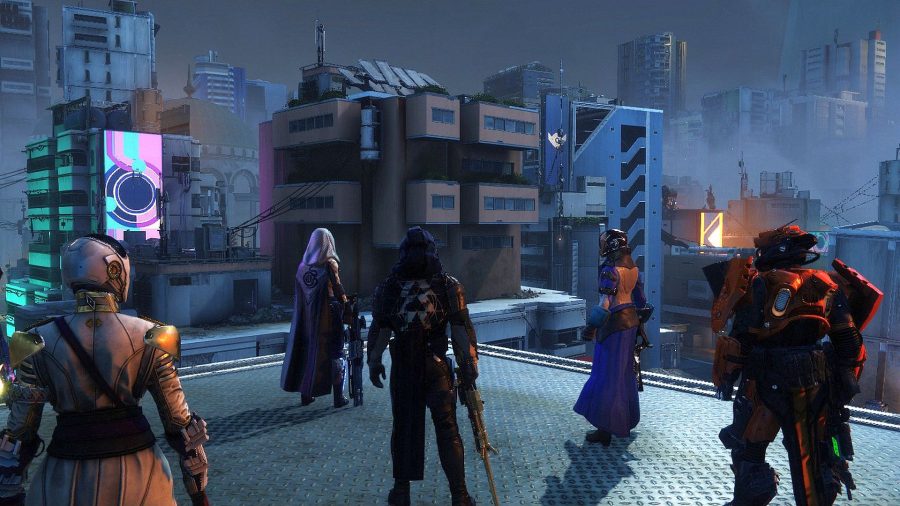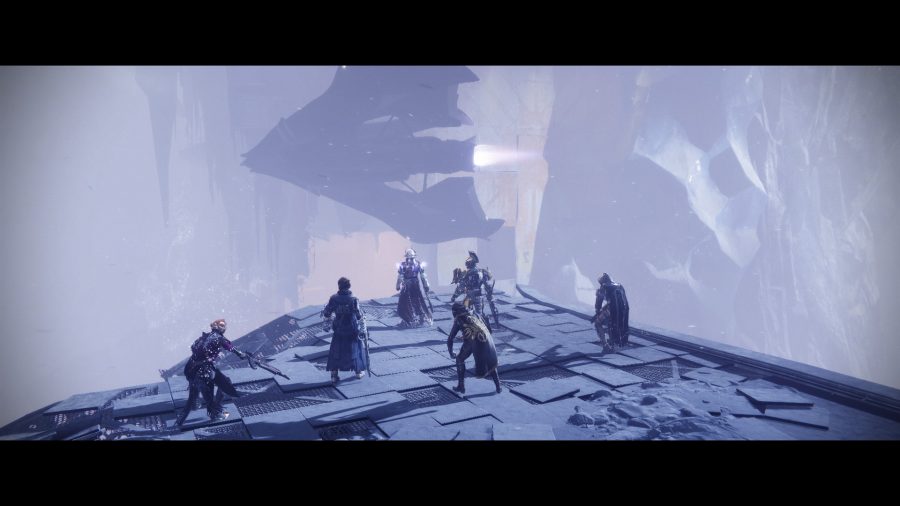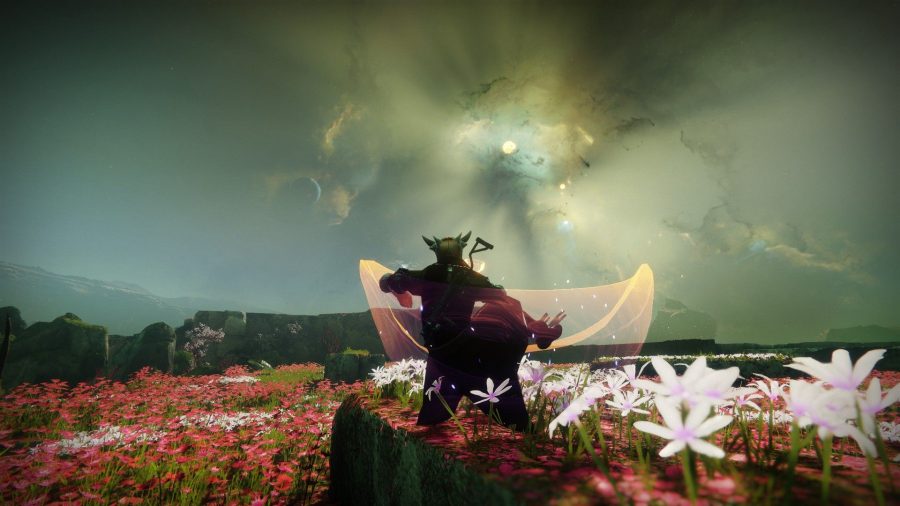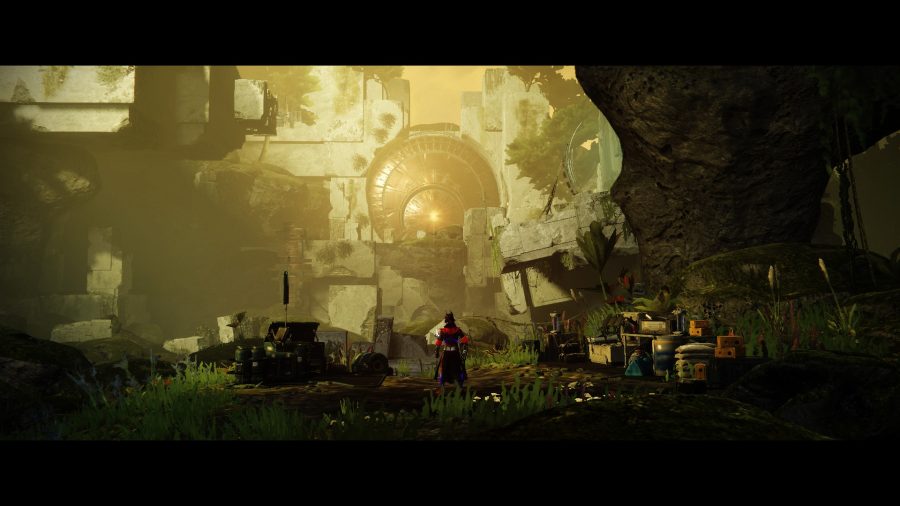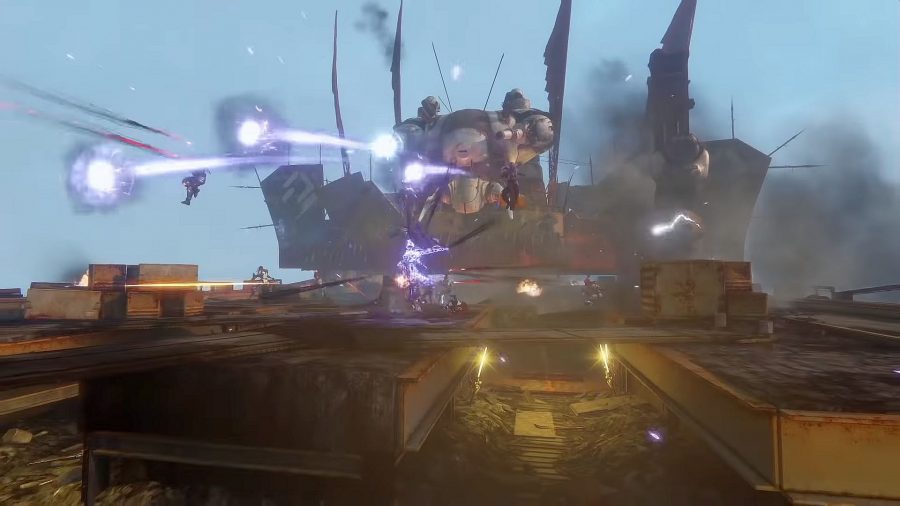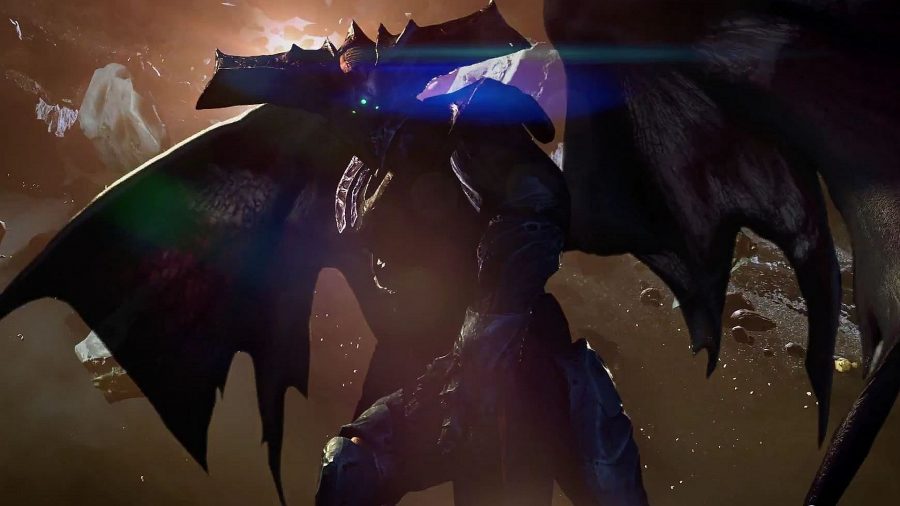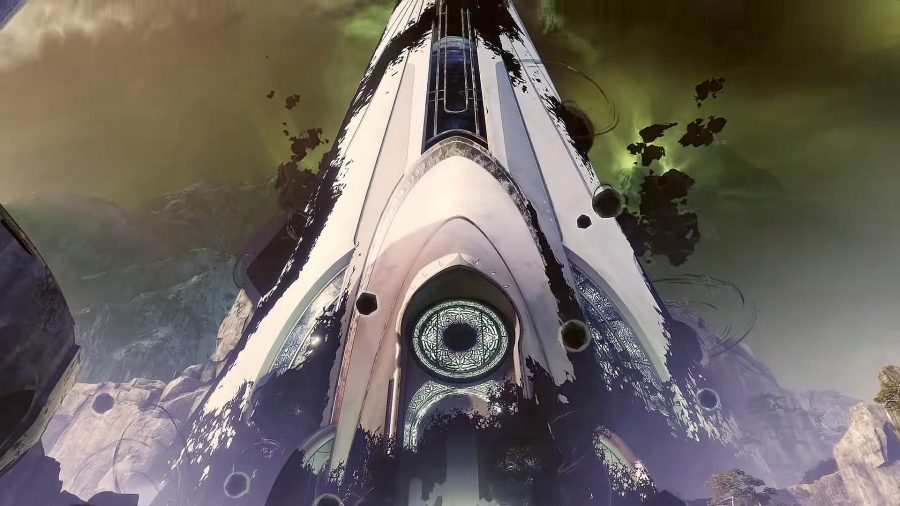Destiny 2 has just reprised the series’s very first raid, the Vault of Glass, making smart but subtle changes to bring this beloved experience into the modern game.
It seemed an apt occasion to look back on every raid in the series, and – being a writer on the internet – my instinct to rank things is already so strong as to require constant, active suppression. So join me, won’t you, as I give in and rank every raid and raid lair in Destiny history.
My first and foremost criterion will be the encounters: how fun they are to play, how good they feel when completed, and how consistently they reward the kind of coordination that raids should require. Challenge is desirable – this is endgame content, after all – but not if it occurs arbitrarily or beyond the control of a group that’s doing everything right. This is most important, but I’ll award bonus points for fluffier stuff: cool settings, theming, backstory, and loot.
I’ll also observe that, when looking at any ranked list, we tend to think that only the upper segment (the top 20%? 25%? Depends on your outlook, I suppose) is the part that’s actually any good. But looking back on all Destiny’s raids, I enjoyed the majority of them, and I struggled to place most raids on this list from Leviathan onward. The uplifting conclusion I take from this is that Bungie’s track record for raid design is actually pretty strong.
Right, preamble over. In ascending order, from not-quite-as-best to best, here’s our list of every raid in Destiny history.
13. Spire of Stars – Destiny 2
It says a lot about the general quality of Destiny’s raids that the lowest ranked entry on this list still has a few redeeming features. The decadent Cabal Emperor Calus is a great character and the question of why we continue to entertain him – or in this case, to defend him from the remnants of the rebellious Red Legion – is an intriguing one for lore nerds. I also love the fact that in the final encounter we’re spunked into space out of the Leviathan’s tallest spire to throw actual balls (no, I’m not consolidating my earlier metaphor here or misunderstanding biology) at literal spaceships. It could be a scene from 1981’s Heavy Metal. Or at least the South Park parody.
Related: Lessons in raid design from WoW, Guild Wars 2, and FFXIV
But as I say, the most important factor in this list is a raid’s encounters, and a cool concept simply can’t rescue Spire of Stars from the most uneven encounters in the series. The Statue Garden is simple to the point of tedium, while the Celestial Observatory takes the kind of intricate mechanics that we already saw in Leviathan and dials them up to joyless and frankly unnecessary degrees. Starting even a single damage phase for Val Ca’uor is a Byzantine exercise in juggling orbs and buffs that soon goes stale – a problem exacerbated by the raid’s loot, which is simultaneously desirable and not desirable.
Spire offers a sidearm, a fusion rifle, and a reskinned Eater of Worlds armour set. Nothing to see there. But the Luxurious Toast emote and prestige mode’s Sleeper Simulant catalyst were highly prized, especially when Sleeper was meta, and yet they both had a relatively low drop rate, obliging hardcore teams to grind a pretty dull raid with no interest in any but its rarest rewards. Not much fun.
12. Eater of Worlds – Destiny 2
The opening platforming ‘puzzle’ and the reactor room pistons are so easy as to barely count as encounters. Its loot is even more forgettable than Spire of Stars – yes, prestige mode offers the Telesto catalyst, and Telesto is low-key a very good gun, but it’s not as glamorous as Sleeper Simulant, nor does its catalyst do as much for it. Why, then, does Eater of Worlds sneak above Spire? For one reason alone: the Argos fight.
Argos is an excellent raid boss, combining a cool setting with a range of demands. Now that we’re all overleveled it’s probably a bit too easy – I’ve been in groups that have cleared it without needing to speak, as only your three runners really need to know what they’re doing to get Vex craniums charging in the right places while everyone else can chill out clearing adds. But if it cut you a little less slack it would be a top-tier fight for me: theoretically at least, it strikes a rare balance of enjoyment and challenge, mechanics and combat. Argos also saves Eater of Worlds from having easily the most boring backdrop of any raid: it’s blocking the gullet of the Leviathan, Calus’s titanic living spaceship, and we’re here to help. We’re relieving a world-eating fish of indigestion. We’re galaxy-strength pepto bismol. Don’t say that’s not cool.
11. Crota’s End – Destiny
It sneaks above Spire for being less frustrating, and Eater for offering more than just one great boss, but if I were to follow my gut alone I’d drop it to bottom. This is one of very few Destiny raids that I really don’t like.
It’s too easy and too short. Destiny hadn’t introduced the idea of a raid lair yet, so expectations for Crota were askew. I’ll allow that the first encounter, in which you find your way through a pitch-black abyss while fending off hordes of Thrall, is pretty cool, but the final fight with Crota himself is underwhelming in every way: the lore would have us believe that this murderous badass killed hundreds of Guardians, yet he turns out to be a slightly bigger glow-in-the-dark knight who can be soloed by one dude with a sword. I get that Crota’s End was supposed to be about ‘hero moments’, but no one else had anything to do except pummel Crota with a Gjallarhorn, and if you didn’t have one of those when looking for a group you could forget about raiding; Crota’s End coincided with the height of this kind of loot-based gatekeeping.
Speaking of loot, Crota’s was ugly and forgettable in comparison to that of the Vault of Glass. Necrochasm was never really worth enduring Crux of Crota’s woeful drop rate. Other than Hunger of Crota – a handy enough mini-Gjallarhorn – Black Hammer is the only exception, though to be fair it’s a significant one, having been reincarnated twice as Black Spindle and Destiny 2’s Whisper of the Worm.
10. Leviathan – Destiny 2
At the time the most mechanically focused raid in Destiny’s history – one which even chucks a ton of mechanics into its only proper boss fight – Leviathan alienated players who revel in slaying scary monsters, rather than the more niche pleasures of a six-person team operating like a well-oiled machine through precise callouts and clearly defined roles.
More like this: Check out the best MMOs on PC in 2020
I quite like all that, though, hence I have a soft spot for Leviathan. I went into it ‘blind’ the moment it launched, and there’s no denying the statement it makes when you first transmat in, nor the statement you’ll make in a full set of its gorgeous prestige armour. Though D1 veterans hoping for guns as stupid-good as Vault of Glass’s were disappointed, Inaugural Address, Midnight Coup, and a couple of others emerged in time as mainstays for Destiny 2’s early years. At the very least, there’s nothing else quite like it: in its encounter design, its aesthetic, its rotating structure, and in the Underbelly, Leviathan is weird and ambitious. We like weird and ambitious.
9. Crown of Sorrow – Destiny 2
Crown of Sorrow is a tight, compact piece of raid design. Its first encounter introduces the Witch’s Blessing mechanic such that everyone can grasp how it works without making Spire’s mistake of being too easy, and the raid builds expertly from there. It flirts with Spire’s mechanical complexity in the final encounters – all that shooting of random glowing limbs, but only when the Deception is in the right place! – but for the most part, bringing down the walls, clearing crystals, and refreshing Blessings make for a deceptively simple final room in which the challenges have a nice flow. There are certainly fewer of Spire’s meaningless layers, yet everyone has a role and must do it well.
Crown of Sorrow also boasts a gorgeous armour set, though its weapons are nothing special – Tarrabah, while rare, has never been a must-have in the same way Anarchy is now. Its premise is equally forgettable: you’re once again doing favours for Calus, essentially confiscating a toy (alright, a cursed Hive crown) from one of his courtiers. Hardly high stakes.
8. Vault of Glass (Original) – Destiny
Controversially low placement? Hear me out. Two of the Destiny community’s leading PvE creators, FleshCrunch of Clan Redeem and Datto himself, once told us that the Vault of Glass’s encounters are actually pretty basic, and that we only look back so fondly on it because of nostalgia (and the rest of Destiny 1 being a bit rubbish at launch). I’m inclined to agree. The Labyrinth is a simple sneaking puzzle, and while charging plates, defending confluxes, and vanishing platforms may have been novelties when the Vault was first unlocked, they’re now commonplace. Adding a cleansing pool is not a big deal.
However, final boss Atheon can still stand tall among Destiny raid encounters, as can the Vault’s sinister backstory as a space of infinite time wherein the Vex work to write themselves into the physical laws of the universe, weaponising ontology itself. That’s badass. As for loot, that rush when Fatebringer finally dropped has yet to be equaled – but let’s be honest, that’s because Vault’s guns were overpowered. Almost every weapon was the best of its kind by far, which was fine when this one raid was the only endgame activity in Destiny, but Bungie soon realised it could never make anything as desirable without unsustainable power creep and sunset them all with The Taken King. The Vex Mythoclast was so hilariously broken in PvP that it needed its own nerf.
I like the Vault of Glass as much as the next D1 veteran, but for the memories, not because it’s all that good compared to what came next. How could it be? It’s from an era when Bungie was still figuring out how to design a raid encounter or how to balance a loot pool. If, in the nearly six years since its launch, Bungie hadn’t surpassed the Vault of Glass then it hasn’t been doing its job. But it has.
7. Scourge of the Past – Destiny 2
There’s nothing quite like Scourge. Whether it’s the setting, fleeing a flaming ball of death on your Sparrow, or the map-reading mechanic, it stands out even among Destiny’s characterful raids. There are moments when some players don’t have much to do – ‘top’ team in the first Kell’s Insurrection stage only needs to worry about killing Servitors, for example. This makes it a little uneven and a little easy for discerning raid purists, but it’s hard to hold that against it when you get to use tanks to stop a giant mech launching a stolen nuke at the Last City. Most people I’ve played with agree with the sentiment: “yeah, Scourge is easy. But it’s just fun.”
Scourge of the Past also boasted probably the most important loot of any raid in Destiny 2 – maybe even the whole series. I speak, of course, of Anarchy, which has ruled the DPS meta in PvE ever since it was introduced. On top of this, Scourge also dropped the only Sparrow that was meaningfully better than any other, and its armour set was quite handsome.
6. Deep Stone Crypt – Destiny 2
I want to rank Deep Stone Crypt higher because of the spacewalk, which is up there with the most wonderful moments in all of Destiny history. Jumping between the limbs of a space station and dodging sniper fire as the unutterably beautiful Deep Stone Lullaby plays, and Clovis Bray’s sharply written AI delivers you a tongue-lashing, is simply unforgettable.
It’s not even as if the encounters are bad – on the contrary, they’re rather elegant – but they’re just a touch too easy. Atraks-1 is the best example: as designed, it’s one of the most frantic and kinetic DPS checks in the game, with players racing to identify the correct clone and do sufficient damage in a very tight window, then racing up to space to shed the Replication debuff before resetting. But we’re so powerful that the design can be brute-forced: six players can easily achieve a one-phase completion with any of the meta damage tricks (The Lament, Falling Star Thundercrash, etc), meaning most of that elegance never gets seen. The final Taniks encounter has a similar problem.
Deep Stone Crypt gets some bonus points for introducing Spoils of Conquest, a game-changing raid loot system that lets you buy multiple copies of any gun that’s dropped for you – perfect if you’re chasing a partcular roll. On that note, it’s still worth running Deep Stone Crypt for a well-rolled Heritage, and Eyes of Tomorrow remains desirable through its exclusivity. It’s just hard to see the raid itself as much of a challenge these days.
5. Garden of Salvation – Destiny 2
Garden is full of brilliant ideas which don’t always land. Its central tether mechanic is fiddly; it takes a moment to activate at both the start and end of the chain, which is fine when completing puzzles but works less well in a heated fight such as Sanctified Mind, an otherwise fantastic boss which innovates by letting you ‘build’ your own terrain with the tether. D1 veterans will also appreciate its throwback to Atheon, both in appearance and the two portals that send you to the outer islands. In fact most of Garden’s encounters are terrific, with Spire Defence the one clear stumble. Merely throwing in the tether doesn’t elevate it above simple wave defence, which kinda kills the momentum after the raid’s excellent opening.
Read more: Check out the best FPS games on PC in 2020
It’s undoubtedly between this and Last Wish for the most beautiful raid. Garden takes you from gorgeous vistas over endless fields of flowers, to spelunking through caves full of Avatar-esque bioluminescent plants, against some of the most breathtaking skyboxes Bungie has ever made – which is a bloody high bar to clear. Loot was relatively forgettable, but at least the guns looked amazing. Divinity is also exactly what a raid Exotic should be: powerful, unique in behaviour, and locked behind an obscure, convoluted puzzle rather than a punitively low drop rate.
4. Vault of Glass (reprised) – Destiny 2
Compared to the expansive, aesthetic wonders that Bungie would go on to build, Vault of Glass remains a drab, dark, and claustrophobic experience. But credit where it’s due: almost seven years later, Destiny’s original raid really does feel like it belongs in Destiny 2.
The most striking aspect of the redesign is its simplicity. Destroying the Oracles in order, and adding Oracle callouts to Atheon, are not such radical tweaks that they change the feel of these encounters, but they have a big impact on their difficulty. Only Gatekeeper stands out as feeling a bit different, but that’s ok, as it was the most forgettable encounter in the old raid. In its new form, it’s one of the best: a hectic game of hot potato neatly complicated by the occasional closure of the portals through which said potato must be carried.
Some of Vault’s famous guns return, including Fatebringer, and though they no longer have their amazing original rolls you can use the Spoils system to chase the ones you want (on that note, thank you Bungie for the easily farmable Templar fight). The result is a powerful incentive to re-run the new Vault of Glass – one which would be even stronger if the new Vex Mythoclast weren’t so bad.
3. Wrath of the Machine – Destiny
King’s Fall began a fine tradition of Destiny raid settings one-upping one another in scope. A vast battleship orbiting Saturn is a tough one to top, but with Wrath of the Machine, and the unforgettable Siege Engine fight atop the Cosmodrome wall, Bungie pulled it off. Aksis is also tied with Oryx for the best raid boss in Destiny 1 – a frantic but not overcomplicated fight in which all three pairs need to communicate effectively, overlap smoothly, and move efficiently. I remember being stuck on this for hours because individual mistakes can scupper the whole attempt, and then, on my next clear, marvelling at how quickly a team that’s concentrating can get it done.
There are hints of the fantastic Spoils system in its Siva key fragments idea, but I didn’t much rate the loot. The Siva-infused weapons simply weren’t that exciting, and I wasn’t a fan of the spiky red and black armour – though perhaps that’s because, as a Warlock main, we definitely got the worst of the bunch. Our coat looked like an angry cheese grater. I can’t deny that it’s striking, I suppose, nor that Outbreak Prime wasn’t an awesome raid Exotic that was also made suitably exclusive by a very convoluted quest.
2. King’s Fall – Destiny
Where Vault of Glass was the saving grace of Destiny ‘vanilla’, King’s Fall was the crowning achievement of its salvation: The Taken King expansion.
For me it’s perfectly timed and paced. It’s not as laborious as Last Wish, as brief as Leviathan or DSC, or as uneven as Garden. Every single encounter is rock solid, and they escalate smoothly to a satisfying climax. Fans of mechanics had the Totems, while fans of monster-slaying were spoiled for choice with four boss fights, two of which – Golgoroth and Oryx – are up there with some of the best encounters in Destiny’s raid history. I’ll concede that the one-orb Golgoroth strategy undermines some of its intended complexity, but the fact that the four-orb and 16-orb strats for Oryx are equally viable and (almost) equally challenging is testament to the elegance of its design.
Its weapons were less potent than those from Vault or Crota – clearly Bungie had learned its lessons – but Qullim’s Terminus was cool, and the Harrowed armour set showed Crota’s End that Hive-themed gear doesn’t have to look like a geriatric lobster had sex with a Hot Topic. Even the jumping puzzles – the warping Hive Tombships and the ejaculating pistons – provided endless comedy deaths that will live long in the memory, as will that final image of Oryx’s corpse falling away into Saturn. Sublime.
1. The Last Wish – Destiny 2
Last Wish is the longest and probably most challenging raid in Destiny history, but its length is carefully considered and paced, and little of its challenge comes from arbitrary complexity. Opening encounter Kalli eases you in, introducing the raid’s many symbols in a familiar format: hold the correct plates to trigger a damage phase. This is soon followed by a skill check that’ll let you know if you stand a chance of clearing the raid at all: chasing Shuro Chi up her tower demands quick and coordinated puzzle-solving, platforming, add clear, and boss damage, all packaged in a frantic, timed encounter that feels like nothing else in Destiny.
It’s hard to identify an individual stumbling block. The Vault feels incongruent among all the bosses, like a Leviathan offcut that someone wanted to paste back in, but that doesn’t mean it’s bad – for fans of mechanics it’s a nice palate-cleanser. As for Riven, what else can be said than that she’s the most astonishing raid encounter in the series. Yes, no one ever does her legit these days, and at this point Bungie’s apparent unwillingness (or inability) to ‘fix’ her cheeses feels like a tacit admission that she is too laborious. But the complexity of her mechanics is more earned than that of Gahlran or Val Ca’uor: she’s a cursed space dragon with the power to grant wishes, for goodness’ sake, and the crescendo of the longest raid in Destiny history. She should be difficult, complicated, and drive the world’s best raid teams halfway to madness when attempting to clear her on the first day. Odd as it may be to defend cheeses, it’s justifiable that Riven exists in two states: her cheeses bring Last Wish within reach of your average pick-up group, while Riven legit remains a fitting conclusion to Destiny’s most ‘epic’ raid to date.
Loot was a mixed bag. One Thousand Voices was a fittingly potent, unique, and – before its drop rate was buffed – exclusive raid Exotic, the armour looked great, and the Taken mods are invaluable for endgame tussles with Oryx’s brood, such as the Prophecy dungeon. Sadly, Last Wish’s Legendary weapons don’t measure up. They look cool, but were never all that desirable – even Nation of Beasts and Chattering Bone were outclassed by other guns of their type.
Like the header image? It’s by Dorje Bellbrook, concept artist at Bungie. Do browse his and other Bungie artists’ work over on ArtStation, because it’s among the best in the business.
